
The representative name of our city, the name of the road derived from General Choi Young
There is a road called Mumin-ro in Deogyang-gu, Daeja-dong, Goyang-si. Unification that connects Seoul to Munsan is located near the cemetery of General Choi Young, behind the monument.
The name Mu-min is a famous general at the end of the Goryeo Dynasty and is named after the city's founder, General Choi Young-gun. As Sword, like Choi Young-yong, he attaches a burden to a person who has defeated the outside and made great achievements in the country. Gen. Yi Sun-shin of Chungmugong is similar to General Moo Min Young Choi.
Mumin-ro, which starts at the cemetery entrance of General Choi Young-gun and ends at Donghun-ro in Ganchon Village, is a narrow two-lane road. On the left and right sides of the road are the trees of maple trees, which are made by the efforts of the city of Goyang, showing the shade and beautiful foliage.
There are many cultural heritages in the vicinity of Moominro. In addition to this, there is a mausoleum of General Choi Young who became the origin of Mumin Roh. In addition to this, there are the cradle and mausoleum of King Sejong, the younger brother of King Sejong, and Gyeongan County and Lim Chang Kun Mausoleum designated as Goyang City's local cultural assets. , Kim Shi-shin's shinto shrine and mausoleum, and Goyang-si's best hanok house, Goyang Young Sajeong.
Around this path, there are large assets, such as Nuri-gil, Goyang-dong, and there are stories of forests, roads, cultural heritages Many citizens are using their cars on foot.
Under King Taejong's great asset, the son of King Taejong is a tomb of Yi Nong in Geunnyeong County and a tomb of Kim Jong-soon, who served in Cheongbaek-ri. To the west of the opposite side, there is also a shrine and a tomb of Princess Gyeong-hyeon, the sister of King Daejong of the Joseon Dynasty. On the left and right side of the path are tombs built during the Goryeo-Choseon period. Most of them belong to the royal family of the Joseon Dynasty, or to the mausoleums of the Chosun Dynasty.
Don't just consider the various graves around the path as common.
I hope that many citizens will be used as a place to walk the healing for their health, as well as the changing process of the tomb and the tomb's tomb and the tomb's people.
Photograph by General Choi Young-gun, who originated in Mumin-ro
2. Hanok, a Goyang consulate built during King Sukjong's reign of Joseon, near Moominno.
3. Kim Joo-shin's grave is well preserved in the original form of the tomb by the Yangban of the Joseon Dynasty.
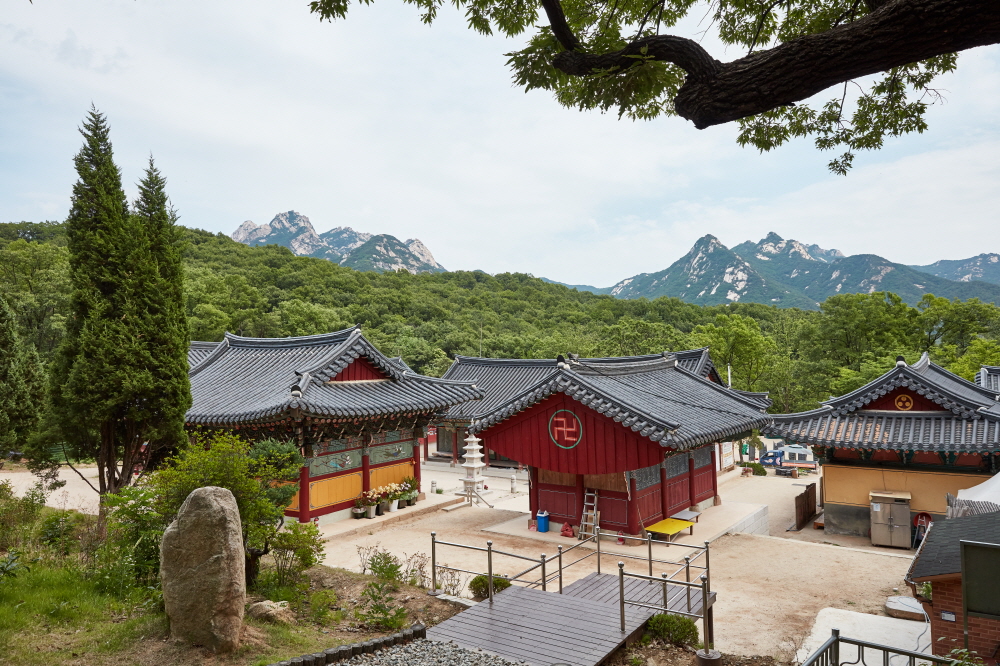
Goyang City and Buddhist ties
Our Goyang city has a deep connection with Buddhism.
Let's take a moment to find out about Korean Buddhism and Goyang City.
1. The temple that was first founded after the death of Saint Wonhyo of the Silla Dynasty was Heungguk Temple in Goyang.
2. In Goyang City, there are Buddhist monks (Bow, Taego, Wonjeungguk Temple), and Seung Topbi.
3. The integrity of Jogyesa Temple, the headquarters of the Jogye Order of Korea, is located in Taego Temple in Goyang City.
4. During the Japanese Invasion of Korea in 1592 during the Japanese Invasion of Korea, a Buddhist monk led by Ambassador Cheoyoung greatly helped his victory.
5. The people who built Bukhansanseong Fortress, which was built during King Sukjong's reign, were also the monks.
6. During the Japanese colonial period, the military units of the military forces have been involved in the activities such as Heungguksa and Jungheungsa.
In May, when Buddha's Birthday was held, we took a brief look at the precious relationship between our city and Buddhism.
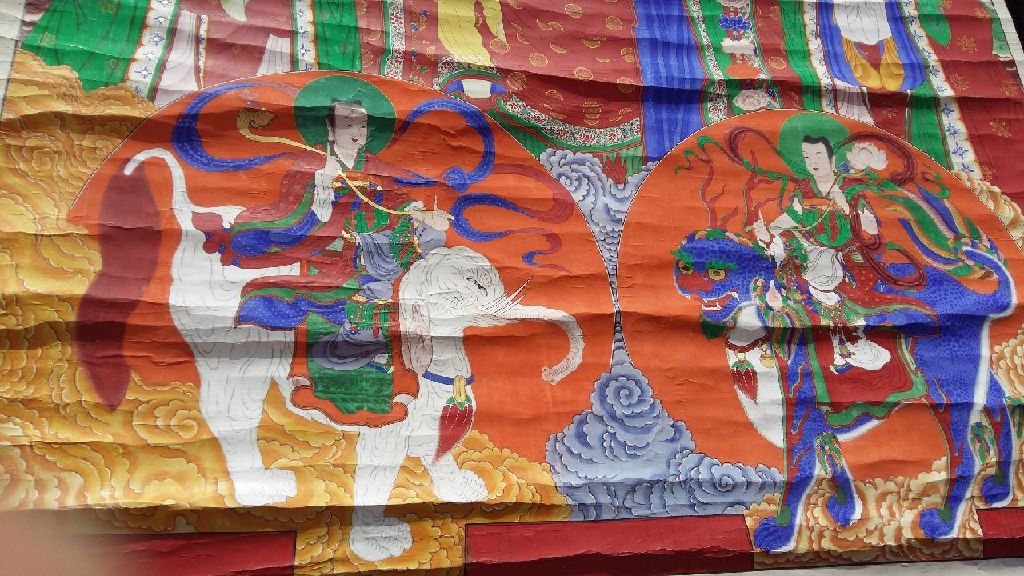
A picture that can only be seen once a year. Goyang Heungguk Temple Hanging Painting
Goyang City's representative temple, Heungkuk Temple,
Heungguk Temple is an old temple with over a thousand years of history that was first created by Saint Wonhyo., the ancient monk of the Silla Dynasty.
Here, there are ten cultural properties and the number of protected Trees in Gongguksa. It is a representative temple of Goyang City.
Na Hanjeon Building of Heungguk Temple There is one of the largest and oldest paintings in our city.
This Hanging Painting is so heavy and big that about 10 young people have to move and walk. It is not open to the general public at all times, but only Buddha's day is open to the public. It is very big and nice picture. Currently designated as Tangible Cultural Asset No. 189 in Gyeonggi Province, the Heungguk Temple is 7 meters in height and 4 meters in width.
It is a Buddhist painting for ceremonies that hangs when a Buddhist temple is used for outdoor events.
It is usually seen when there is a large Buddhist memorial service such as a Yeongsanjae, Suryukchae, Buddha's day.
Heungguk Temple's Hanging Painting is also open once a year only on Buddha's birthday.
The temple was rises in 1902, during the Korean Empire, by Sunbi Um, the concubine of King Gojong.
There are seven paintings including Amitabha, Kannon Bodhisattva, and Daejeji Bodhisattva, and a total of 12 paintings have been participated in the painting. Kyeong-seok Koseon, who is the head of these Hwasung, is a person who has left over 70 paintings of Buddhist paintings in Seoul and Gyeonggi Province.
On the lower part of the screen is Mundo Bodhisattva on a blue rion and Bodhi Bodhisattva on a white elephant. The color of the Hanging Painting was red, bright green, dark blue and yellow and ocher.
Amitabha, Kannon, and Sejibosal are painted in yellow, and the paintings that stretch out into the sky are blended with the pictures of the clouds and are very colorful.
This painting is a typical Buddhist painting from the early 20th century.
The cultural value of the painting is significant in that it retains the typical aspect of the Korean Buddhist painting.
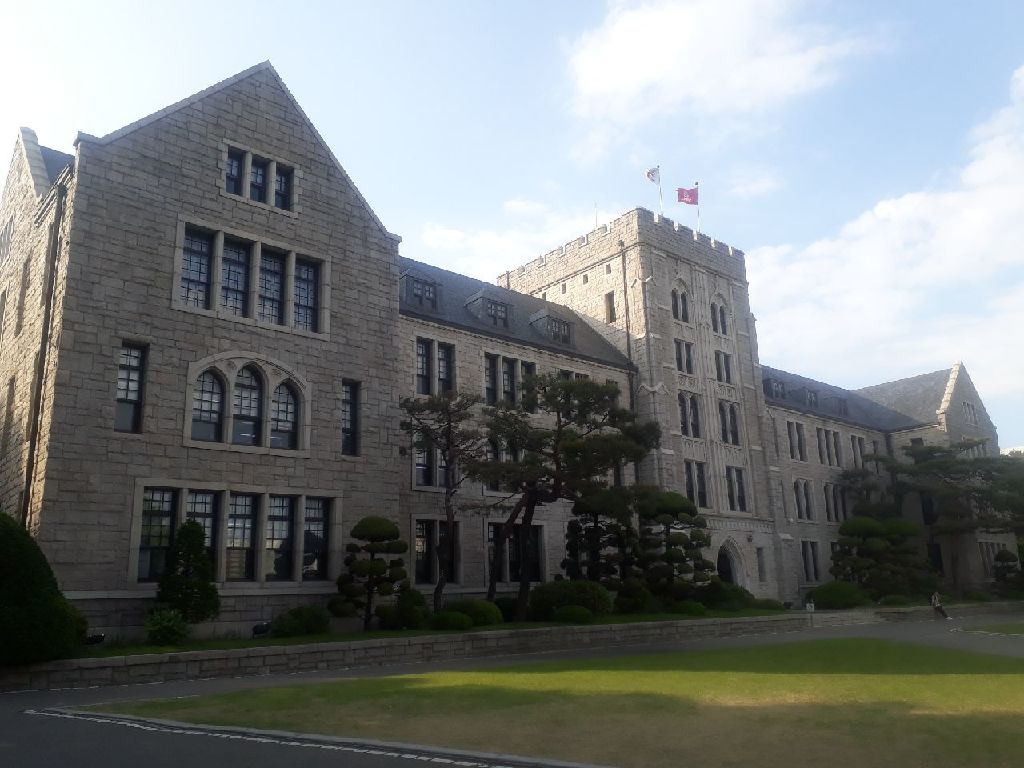
Ties between Korea University and Goyang City in Seoul
Korea University Main Building (Historical Site) built at the time of Seongin-myeon.
In the 1930s, when Korea University was built in the present place, the address was Anam Lee in Seongin-myeon, Goyang-gun, Gyeonggi-do. The main building, the graduate school, the central library, and the western building (temple), which are currently designated as private, were built in this order. The history of this transition is recorded in the Korea University 100th Anniversary Memorial Hall and the Korea University Museum on the first floor.Korea's democratization started in the 4th and 19th revolutions, and Korea University was a Sungin-myeon area jurisdiction.
The Korea University Museum has national treasures excavated from Goyang County. The representative example of this is the teaspoon jar of Taishil (the amnion[caul] and the placenta, the womb). In the royal family, when the baby was born, he immediately placed the umbilical cord in his jar. More than 90 percent of the royal tombs of the Joseon Dynasty are located in Seosamneung.
It was forcibly moved by the Japanese Empire
This Placenta Chamber of Korea University has been excavated as it was in the past.
On display at the Korea University Museum Placenta Jar in royal tomb of Aegi, Anam-ri, Sungin-myeon, Goyang-gun(My pot, Out port)
When Korea University belonged to the Goyang Gun, Goyang County was located across from the current Dongdaemun History and Culture Park. I still remodel some of the old building. Around here, there is a large shopping mall with more than 20 floors, and only this three-story building remains humble.
When Goyang County Office was here in Dongdaemoon, the area of Goyang County included current Goyang City, current Suyu-dong to the north, Jamsil and Ttukseom to the east, Yeouido to the west, and Gukul.It was a very wide area of Goyang-gun.
The site where Dongdaemun Goyang Office used to be(small three-story building between buildings)
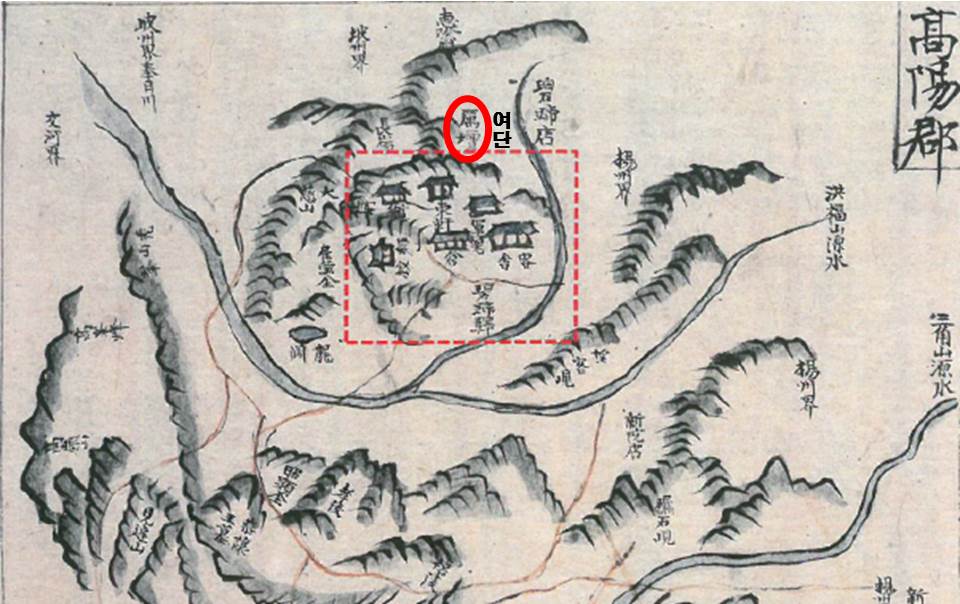
"Call those who have died in memory." Goyang-gu, Goyang-dong, Goyang-si a story of Yeodan
If you look at the old map of Goyang City, you will see the place of Goyang Yeodan on the top (north) of Goyang-Gun Government .
The Yeodan is the altar that was created to comfort the inhabitants of the people, especially the people who have died unjustly among the dead of the platoon.
The appearance was similar to the resignation of the western part of Gyeongbok Palace in Seoul.
In the first year of King Taejong, a Yeodanje was implemented. At first, the first brigade was established in the north of Hanyang. The first proponent is Goryeo Kang, a professor at the early Joseon Dynasty, who is a professor at Koryo.
After that, the Yeodan system was extended to the whole country and a brigade was formed in the Upper Army.
It is confirmed that it is located in the area of Daegu-dong in the mid-term and in the area of Goyang-dong in the late Joseon period. Field survey results have now disappeared without trace.
The Yeodan rituals are very significant in the history of Goyang City as follows.
1. The government also offered sacrifices to the general public.
2. There were 20 different types of spirits, including those who died at a young age, women who died in childbirth, and people who were killed, and they held separate rituals at the left and the right wing.
3. Generally, in the Joseon Dynasty, there were many sacrifices for the ruling class such as the King and the King, but sacrifices to comfort the unjust soul for the purpose of prevention of infectious diseases were very rare.
4. The record shows the size, material, and shape of brigade.
5. In the old map, Yeodan was marked at a distance close to Goyang County Office, so the country considered the ordinance very important.
A brigade built to comfort the soul for the people who died in every town in the country. It is a scene of history where our ancestors' people's love of the people is embedded.
Although the original location can not be restored to its original shape due to development, the brigade's spirit and spirit of the brigade is an intangible cultural heritage to be imitated today.
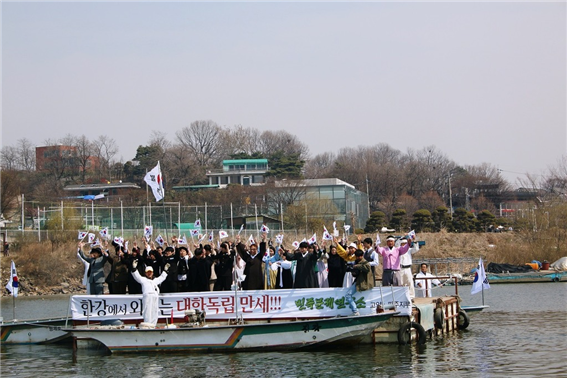
The Independence Movement day Reenactment
3.1 On the 99th anniversary of the Independence Movement Movement, we held a reenactment ceremony on Saturday, March 31, at the old Hangang Naru (Goyang City Rangju Sangseong Historical Park), a typical independence movement in Goyang City.
It is a very meaningful event because it shows and reproduces the history of Kanyei 99 years ago when 400 citizens participated in the 3.1 Independence Movement reenactment event on that day.
The performances of the performances, the performances of the children's choir, the loneliness of the longevity, and the scandalous bloody chanting were performed as ancillary events.
The citizens who participated said that it was a good opportunity to recall the love of the ancestors who built the independence movement on the ship only 99 years ago in Korea.
t is also the center of the independence movement that developed the largest independence movement in Goyang city in March.
In Goyang City, every year, in order to spread the history of the independence movement to the future, there is an annual reenactment exercise event in Hanyu Mountain Historical Park.
The event will be held in 2019 to mark the 100th anniversary of the March 1 Independence Movement.
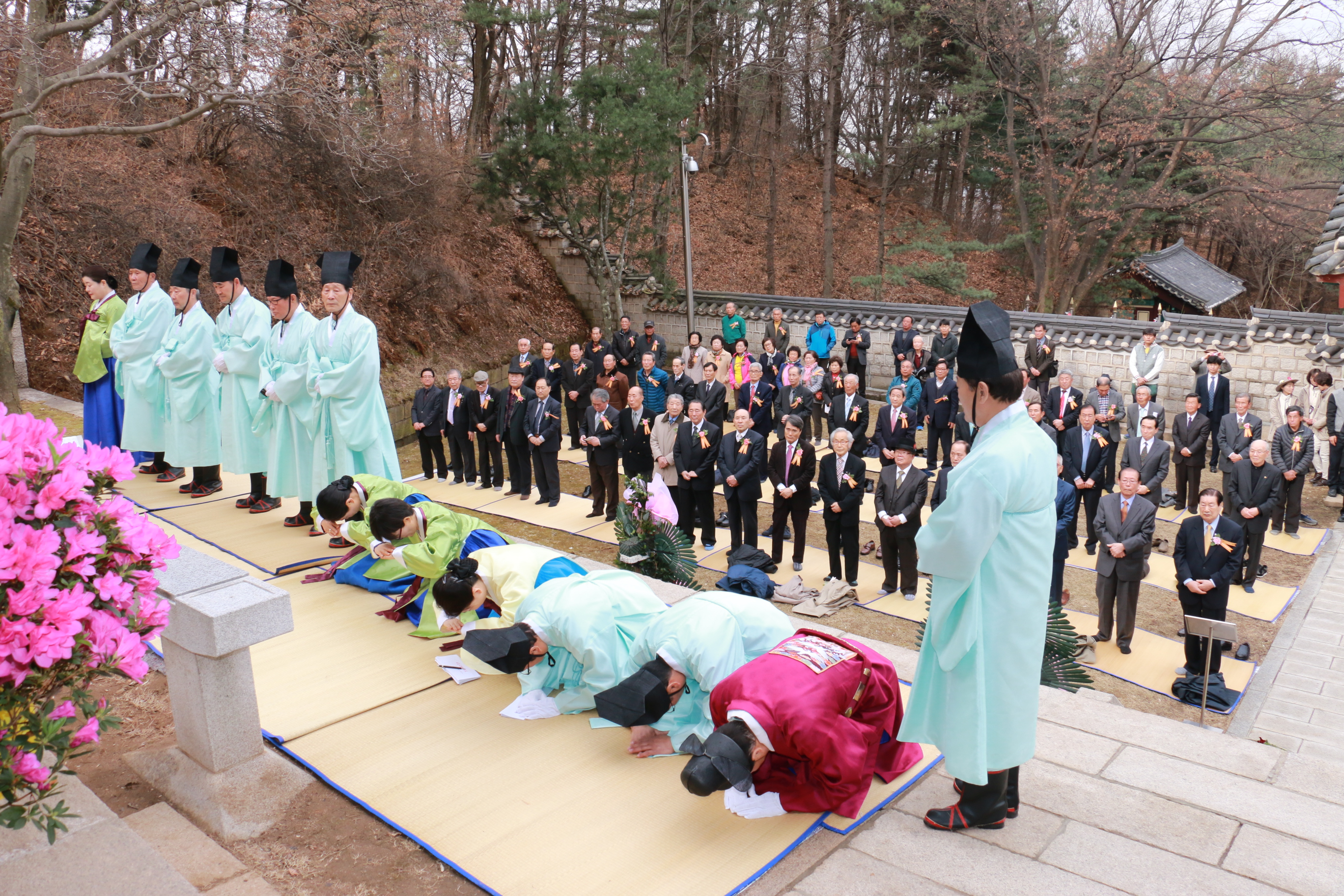
Goyang City Haengju Festival
The Haengju Daepoje is a traditional rite to honor General Kwon Yul (Do Won-soo), the captain of Haengju Dae-jeo on March 14, 1593. It is observed every year at Chungjangsa Temple, a shrine located in Haengjusanseong Fortress, and was originally a cultural event, but now only traditional rituals have been held.
During the reign of King Heonjong of the Joseon Dynasty, a construction site was built on the Han River under Haengju Fortress, but it was severely damaged by the Korean War.
The memorial service for Chungjang Temple is being held by the mayor of Goyang, the chairman of the Goyang City Council, and the head of the Goyang Cultural Center.
Haengju Daejipje, which lasts for about 40 minutes, is practiced as a traditional rite, a first rite, a phonemic rite, and a mangy rite.
After the traditional ceremony, ordinary people can also make flowers and burn incense one by one.
This year marks the 425th anniversary of the Japanese Invasion of Korea, and many of the members of Andong-gwon (Chairman: Kwon Hae-ok) participated in the event.
![What should we do with the tomb of Seung-Koo Yi, the first son of Wan-Yong Yi, the national traitor]()
What should we do with the tomb of Seung-Koo Yi, the first son of Wan-Yong Yi, the national traitor
At Hyangdong-dong, Deogyang-gu of this city has the tombs of Seung-Koo Yi, the first son of Wang-Yong Yi, and his wife Geol-Gui Im.
Hwajeon-dong and Hyangdong-dong area used to be the village of the Yi Family of Ubong.
The tomb of Sir Jishin Yi, located in Hyangdong-dong, is designated as a Goyang Regional Cultural Asset.
An apartment complex is being constructed in Hyangdong-dong, and right next to the construction site remains the burial site of Seung-Koo Yi and Geol-Gui Im. With broken is broken and burnt away cover stone, the tomb is entirely covered by acacia trees and scrubs, unnoticed by the naked eye.
Seung-Koo Yi was a pitiful person. He grew up in the glory of his father and married Geol-Gui Im, the best-known beauty of her generation. But according to Hyon Hwang’s Maecheonyarok, Wang-Yong Yi had an affair with his daughter-in-law and sent his son away to study in Japan. When he finds out about their affair, Seung-Koo Yi commits suicide in his 20s.
Afterwards, he was buried in Hyangdong-dong. When his wife died, the families buried her with him. When the apartment complex is developed in the Hyangdong area, the tomb site will be preserved as a part of a park. Currently the site is possessed by the Development Fund Committee of a university in Seoul.
It would be better if his descents relocate the tombs, but they are not willing. If the site becomes developed into a park and the tombs are preserved, it would be quite difficult to explain to our children about the son of the traitor with a pitiful life.






